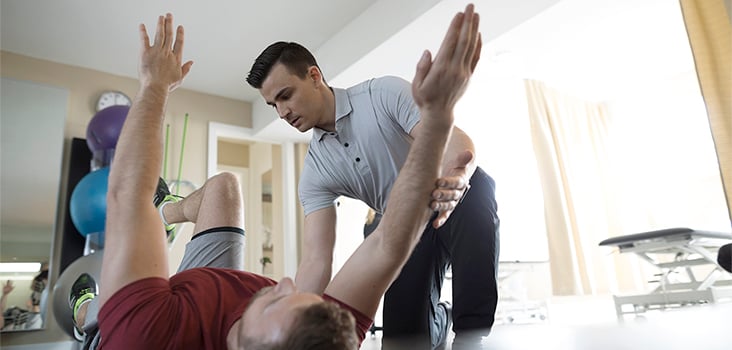
The New Way to Combat the Opioid Epidemic
31 million Americans are living with low back pain. It’s the most common work-related injury. It’s also a primary driver for the opioid epidemic in America, as many providers often prescribe prescription pain medications as part of treatment for low back pain. But new research and a growing prescription drug crisis shows non-drug treatment can achieve better outcomes.
New Recommendations
In 2014 more than 240 million prescriptions were written for opioids. That’s more than enough to give every adult in the nation their own bottle. Drugs have been a popular choice for treating low back pain, but new recommendations from the American College of Physicians are now encouraging non-pharmaceutical treatment such as physical therapy, acupuncture, and massage.
In the 1990’s, physicians were being educated that it’s acceptable practice to use long-term opioids for chronic musculoskeletal conditions. Often these opioid medications were combined with muscle relaxants and/or sleep medication which resulted in an augmentation of the adverse effects from the opioid medication.
This practice has taken hold by many physicians and has added to the often-seen decline of functionality of the patient. Now, new research has found that very strong medication in care has shown to worsen outcomes in the long term, leading many physicians to walk back the overuse of prescription medication in the treatment of low back pain. Now more medical associations and care practices are placing new restrictions on the use of opioids and focusing more on active treatments in addressing low back pain.
Physical Therapy for Low Back Pain
Using physical therapy to treat low back pain has been a common practice for many therapists. Patients suffering from most types of low back pain are often referred for physical therapy as an initial treatment option. The goals of physical therapy are to decrease back pain, increase function, and teach the patient a maintenance program to prevent future back problems.
There is a substantial amount of medical literature supporting specific physical therapy exercises for the treatment of low back pain. While most episodes of low back pain will eventually get better over time, active exercise plays an important role in helping reduce the patient's pain and improving subsequent function.
Active Approach to Low Back Pain
A common myth with low back pain is to rest, be still and it will heal itself. Resting can actually prolong pain and disability. Active movement keeps the body in its preferred state, and helps to speed healing. An ongoing exercise program also reduces the likelihood and severity of future occurrences of low back pain.
In an effort to avoid the use of prescription medication as part of treatment for low back pain, other providers are turning to more eastern medicine practices such as acupuncture and massage therapy. According to the National Center for Complementary and Integrative Health (NCCIH), results from a number of studies suggest that acupuncture may help ease chronic low-back pain, neck pain, and osteoarthritis/knee pain. Researchers concluded that acupuncture may have a favorable effect on self-report pain and functional limitations in low back pain patients.
Combating the Opioid Crisis
Many organizations are now putting physicians through reeducation programs to apply different approaches to managing conditions such as low back pain with more active approaches. Whether it’s an increased integration with physical therapy, learning the benefits of spine manipulation, or incorporating elements of eastern medicine – creating a more robust arsenal of tools to treat patients is preferred to increased opioid use.
At Concentra, our physicians work alongside physical therapists to create a care team for patients – providing a comprehensive treatment plan for patients using the most advanced active treatment methods. We also have changed the way we approach pain by focusing on a patient’s functional gains instead of the pain level – creating a positive mind shift for patients on what they continue to improve.
With low back pain as the most common work-related injury, it’s clear the condition is likely to continue for employees. However, we can start to combat the opioid crisis by applying new approaches to routine conditions that work to address the condition instead of simply treating the pain. Through new treatments, active approaches, and a combination of options, physicians and patients have new hope for better outcomes.



